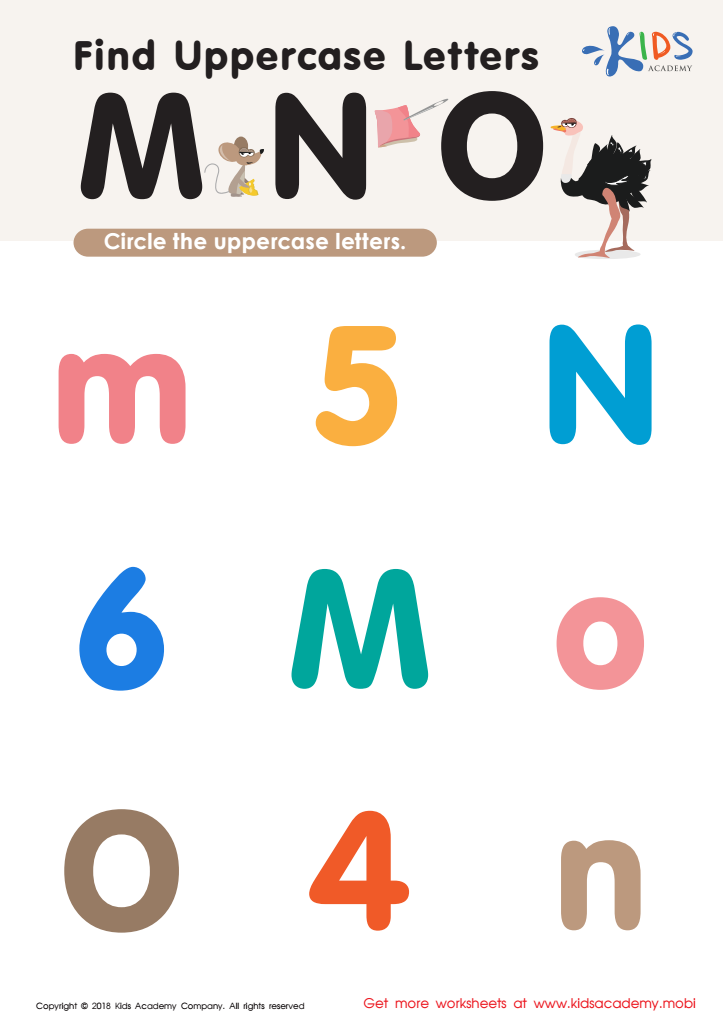Uppercase identification Alphabet Worksheets for Ages 6-8
5 filtered results
-
From - To
Discover our engaging Uppercase Identification Alphabet Worksheets designed specifically for children aged 6-8! These interactive resources help young learners recognize, identify, and master uppercase letters essential for reading and writing. Each worksheet is crafted to make learning fun, featuring colorful illustrations and creative activities tailored to captivate young minds. Whether your child is practicing letter recognition or enhancing their fine motor skills, our worksheets provide the perfect platform for growth and development. Foster a love for reading and empower your child with the foundational skills they need. Start their alphabet journey today with our easy-to-use, printable worksheets!


Find Uppercase Letters Worksheet


Find Uppercase Letters J, K, and L Worksheet


Find Uppercase Letters A, B, and C Worksheet


Find Uppercase Letters V, W, X Worksheet


Find Uppercase Letters M, N, and O Worksheet
Uppercase letter identification is essential for children aged 6-8, as it lays the foundation for literacy and reading skills. At this age, students are typically transitioning from learning the letter names and sounds to reading simple words and sentences. Understanding uppercase letters is crucial because they are often used at the beginning of sentences and important proper nouns, such as names and places.
Parents and teachers should prioritize uppercase identification as it aids in developing phonemic awareness and enhances children's ability to recognize words. This skill is vital not just for reading but also for writing, as it helps children learn correct capitalization rules. Furthermore, engaging with uppercase letters through various activities, such as games and creative writing exercises, fosters enthusiasm for learning and improves motivation.
Moreover, early mastery of uppercase letters contributes to children's overall confidence in literacy. Recognizing and forming letters correctly leads to clearer handwriting and effective communication skills. By emphasizing uppercase letter identification, parents and teachers equip students with essential tools for future academic success, promoting a love for reading and learning that extends beyond elementary education.

 Assign to My Students
Assign to My Students




















